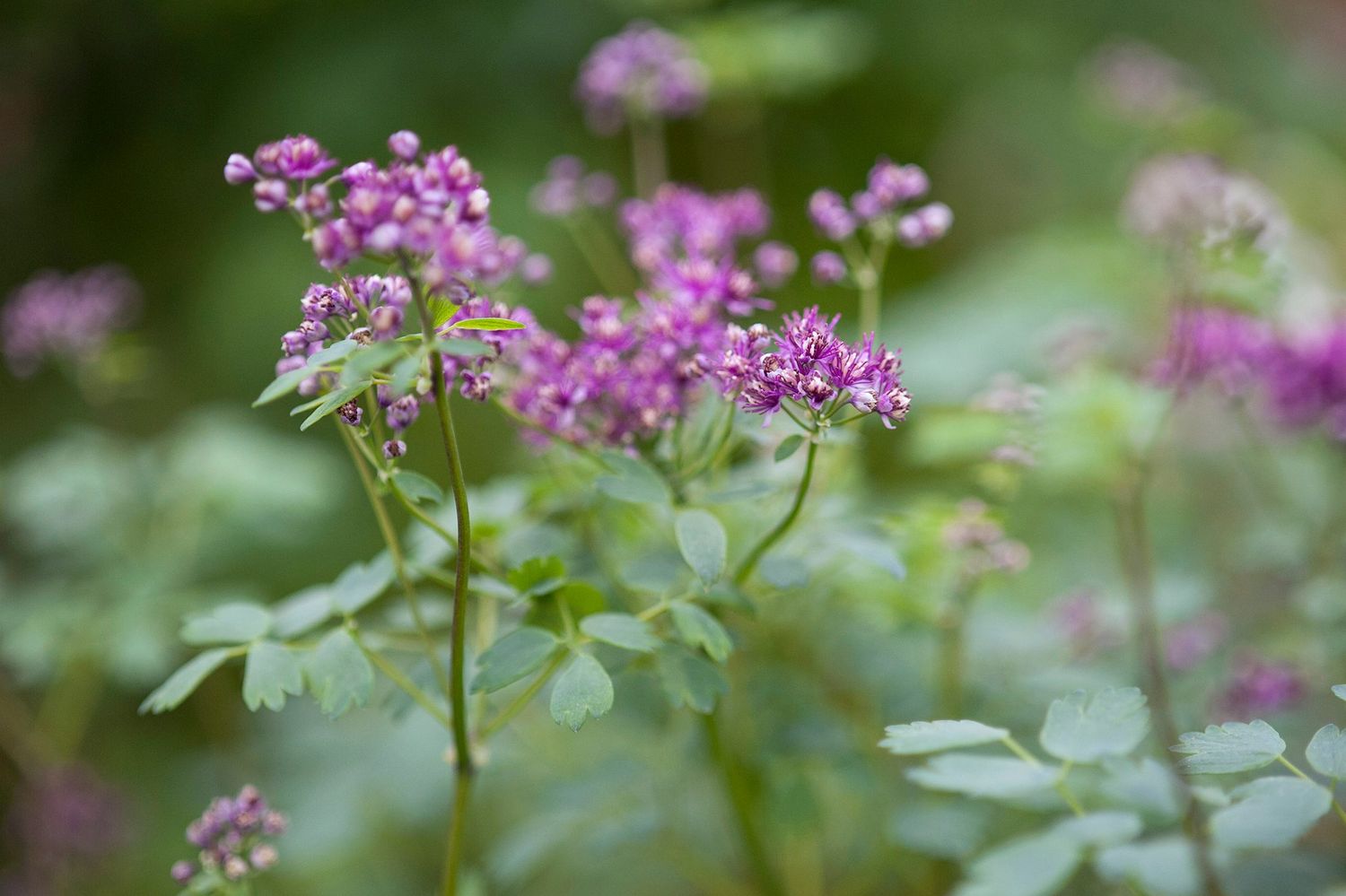
Thalictrum, commonly known as meadow-rue, is a fascinating plant genus that often goes unnoticed. These perennial herbs belong to the Ranunculaceae family and are known for their delicate, feathery foliage and airy clusters of flowers. Did you know that Thalictrum species can be found in various habitats around the world, from woodlands to meadows? With over 100 species, these plants offer a wide range of colors and forms, making them a favorite among gardeners and botanists alike. But what makes Thalictrum truly special? From their unique pollination methods to their medicinal uses, there's a lot to learn about these intriguing plants. Whether you're a gardening enthusiast or just curious about nature, you'll find these 28 facts about Thalictrum both enlightening and enjoyable.
What is Thalictrum?
Thalictrum, commonly known as meadow-rue, is a genus of flowering plants in the buttercup family. These plants are known for their delicate, feathery foliage and airy clusters of flowers. Let's dive into some fascinating facts about Thalictrum.
-
Thalictrum belongs to the Ranunculaceae family, which also includes buttercups and clematis.
-
The genus name "Thalictrum" is derived from the Greek word "thaliktron," meaning "to flourish."
-
There are over 150 species of Thalictrum, found in temperate regions around the world.
-
Thalictrum plants are typically herbaceous perennials, meaning they live for more than two years and die back to the ground each winter.
Unique Characteristics of Thalictrum
Thalictrum plants have some unique features that make them stand out in the plant world. Here are some interesting characteristics.
-
Thalictrum leaves are often finely divided and resemble those of ferns or maidenhair.
-
The flowers of Thalictrum are usually small and lack petals, but they have numerous showy stamens that give them a fluffy appearance.
-
Thalictrum flowers can be white, pink, purple, or yellow, depending on the species.
-
Some species of Thalictrum have fragrant flowers, adding an extra sensory dimension to their beauty.
Habitat and Growing Conditions
Understanding where Thalictrum thrives can help gardeners cultivate these plants successfully. Here are some facts about their preferred habitats and growing conditions.
-
Thalictrum plants are commonly found in meadows, woodlands, and along stream banks.
-
They prefer moist, well-drained soil and can tolerate partial to full shade.
-
Thalictrum plants are hardy in USDA zones 4-9, making them suitable for a wide range of climates.
-
These plants can grow quite tall, with some species reaching heights of up to 8 feet.
Uses and Benefits of Thalictrum
Thalictrum plants are not only beautiful but also have various uses and benefits. Here are some ways they can be utilized.
-
Thalictrum is often used in ornamental gardens for its delicate foliage and airy flowers.
-
The plants can be used as a backdrop in flower beds or as a focal point in a garden.
-
Thalictrum flowers attract pollinators such as bees and butterflies, making them beneficial for the ecosystem.
-
Some species of Thalictrum have been used in traditional medicine for their purported healing properties.
Interesting Facts About Thalictrum Species
Each species of Thalictrum has its own unique traits and stories. Here are some intriguing facts about specific Thalictrum species.
-
Thalictrum aquilegiifolium, also known as columbine meadow-rue, has leaves that resemble those of columbine plants.
-
Thalictrum delavayi, or Chinese meadow-rue, is known for its striking purple flowers and tall, graceful stems.
-
Thalictrum flavum, commonly called yellow meadow-rue, produces bright yellow flowers and is native to Europe.
-
Thalictrum rochebrunianum, or lavender mist meadow-rue, is prized for its lavender-colored flowers and tall, elegant growth habit.
Thalictrum in Culture and History
Thalictrum has made its mark not only in gardens but also in culture and history. Here are some cultural and historical tidbits.
-
In ancient times, Thalictrum was believed to have protective properties and was used in various rituals.
-
The plant has been depicted in botanical illustrations and art throughout history, showcasing its delicate beauty.
-
Thalictrum has been mentioned in literature and poetry, often symbolizing grace and elegance.
-
Some cultures have used Thalictrum in traditional medicine to treat ailments such as fever and inflammation.
Fun Facts About Thalictrum
Let's wrap up with some fun and quirky facts about Thalictrum that you might not know.
-
Thalictrum plants can self-seed, meaning they can spread and create new plants without human intervention.
-
The seeds of Thalictrum are often dispersed by wind, allowing them to colonize new areas.
-
Some species of Thalictrum are known to hybridize, creating unique and interesting plant varieties.
-
Thalictrum plants are deer-resistant, making them a good choice for gardens in areas with high deer populations.
The Final Word on Thalictrum
Thalictrum, or meadow-rue, is more than just a pretty face in the garden. With its delicate flowers and feathery foliage, it adds a touch of elegance to any landscape. But there's more to this plant than meets the eye. It thrives in varied climates, making it a versatile choice for gardeners. Its medicinal properties have been valued for centuries, offering natural remedies for various ailments. Plus, it supports local wildlife, attracting pollinators like bees and butterflies.
Whether you're a seasoned gardener or just starting out, Thalictrum is a fantastic addition to your plant collection. Its low-maintenance nature and aesthetic appeal make it a favorite among many. So next time you're planning your garden, consider giving Thalictrum a spot. You'll not only enhance your garden's beauty but also contribute to a healthier ecosystem. Happy gardening!
Was this page helpful?
Our commitment to delivering trustworthy and engaging content is at the heart of what we do. Each fact on our site is contributed by real users like you, bringing a wealth of diverse insights and information. To ensure the highest standards of accuracy and reliability, our dedicated editors meticulously review each submission. This process guarantees that the facts we share are not only fascinating but also credible. Trust in our commitment to quality and authenticity as you explore and learn with us.
